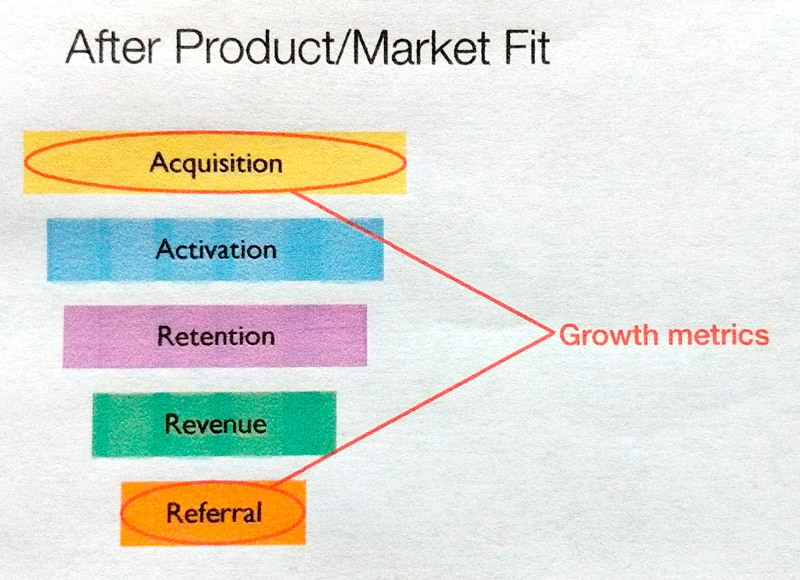There’s a lot of talk about how to measure your business especially if you’re pursuing product-market fit. You might be a startup or a company trying to (re)build a product. But how do you know if you’re heading in the right direction?
Where to start when it comes to measuring?
Of course, you’re going to measure something but what? If you don’t know a lot about your customer, you’re likely going to start with Activation, go through some learning cycles to see if retention is created and end up in Acquisition. That is ideal. The downside is you’re learning about your customer because of the process and it’s going to cost you a lot of time.
If you know a lot about your customer and the deep reasons why they make decisions (which is what we do at Stealth Dog Labs), you’re going to move through the stages as described above quickly And you’re not going to rely on a time-eating process to learn about your customer.
Regardless of what you know about the customer, the best place to start is activation.
Can you make a mistake by prioritizing the wrong stage at the wrong time?
Having five key areas to measure does make a lot of sense. Unfortunately, prioritizing the wrong things at the wrong time makes a real mess.
Most businesses immediately think of revenue and referral via the Acquisition stage. Why not, it’s totally logical.
You can jump into acquisition right away if you understand the deep reasons why people buy. It’s very unlikely you can pull this off. What you don’t want to do is start here especially if it’s going to cost media dollars and partnerships (media and Partnerships is somewhat of the same thing. Waste it and you’re going to get the same results).
I’m going to argue that the revenue stage will come to a lot faster if you pay attention to the underserved needs of your future customers. By understanding people thoroughly you will speed up the Activation stage. In fact, you’re going to speed up all stages. defining the underserved needs of customers is foundational to product-market fit. Measuring the underserved needs is something that’s been sadly missing.
That’s the premise of what I built at Stealth Dog Labs. The goal is to speed up the steps in the process that drives the steps by quantifying underserved needs.
How activation and retention can get messed up also
While revenue is the most important thing in the room, activation and retention are critical. Here’s where things go wrong. If you’re trying to send the wrong people into the activation and retention channel and struggling, it’s because you have not truly solved the underserved needs of the customer. They should get you out of the gate and activation should flow well if you can quantify why people make decisions about your product.
Making things better faster and cheaper
By nailing these down via deep understanding of why people decide makes growth go a lot faster, With far less garbage in the system.
Some rules to follow:
- Start in the activation stage and make sure you understand and have quantified the underserved needs of customers for each product.
- Don’t start in the acquisition stage unless for some reason you have a miracle understanding of why people are going to buy your product.
- Don’t rely on anything to do with media metrics. The job of media is to sell media. They are not about to sell the cream-of-the-crop to you. If you get one good lead out of 100 clicks, congratulations
- Avoid averaging. Mixing good things and bad things together is averaging too much of a diverse set of experiences. You’re not going to learn much. It’s too hard to decipher the intention of people you’re not meeting or even to get inside of their heads. You have to quantify and it’s a very different way.
- Build predictions that you can measure.
- Activation and retention go hand-in-hand and quantifying the underserved needs of future customers you will move into the acquisition stage quickly.
- Once you were data-driven about acquisition revenue and referral come along for the ride.
Guessing is just not cool. Avoid it and things get much more interesting and positive. One more thing, Don’t sell people junk. Build a product people care about that they need.



